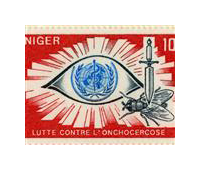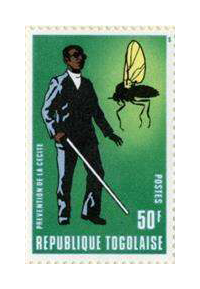Onchocerciasis

On October 5, 2015 the Nobel Assembly announced the recipients of the 2015 Nobel Prize in Physiology or Medicine. One half of the prize was awarded jointly to William C. Campbell and Satoshi Omura. This team’s discoveries led to a therapy for onchocerciasis, better known as river blindness.
River blindness is caused by the roundworm parasite found in swift moving fresh water rivers and streams. Flies that breed in this water become carriers of the roundworm and then deliver the parasites to human hosts. The parasites are common in Central and South America, sub-Saharan Africa and South Asia. Roundworm causes a number of problems for their human hosts. Approximately half of all those infected become blind. In 2004, Stanford University noted that onchocerciasis was the second leading cause of preventable blindness in the world.
Starting in the 1970s, governments tried to control fly populations in order to keep humans from being infected with the parasites. However, Campbell and Omura discovered a more direct route. Satoshi Omura isolated specific soil bacteria. William Campbell experimented with the Omura cultures, further isolating an agent that attacked parasites. Together their discoveries led to a new class of drugs - an oral dosage that could be distributed through local clinics and hospitals to people in desperate need.
Hugh R. Taylor, MD predicted this new drug would end river blindness during his 2012 talk at the Museum of Vision history symposium. His lecture, entitled “Parasites in the Eye: on the River and Elsewhere” can be obtained from the museum.
According to the Nobel Committee, the 2015 recipients of the Nobel Prize in Physiology or Medicine “have provided humankind with powerful new means to combat these debilitating diseases that affect hundreds of millions of people annually. The consequences in terms of improved human health and reduced suffering are immeasurable.”
Commemorative Stamp
 This stamp was issued by Togo in 1976 to commemorate one of the many campaigns to eradicate river blindness.
This stamp was issued by Togo in 1976 to commemorate one of the many campaigns to eradicate river blindness.